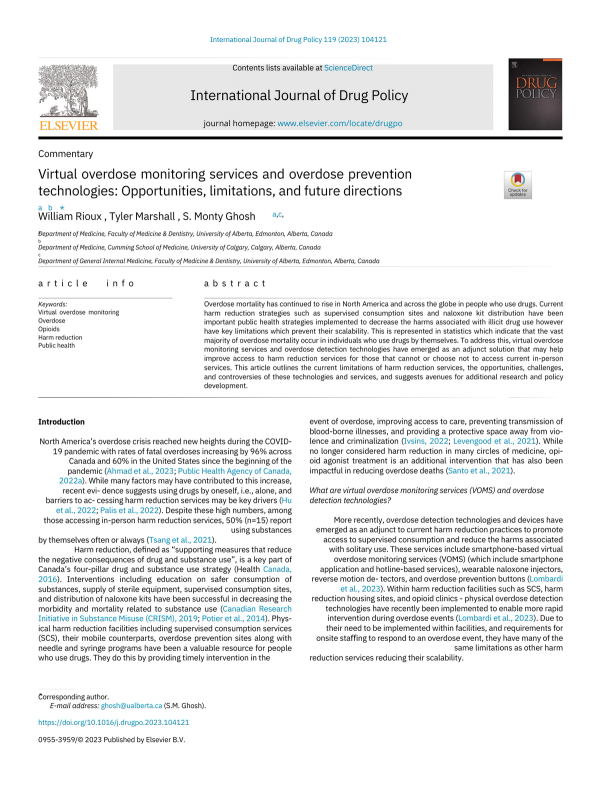Virtual overdose monitoring services and overdose prevention technologies: Opportunities, limitations, and future directions
Abstract
Overdose mortality has continued to rise in North America and across the globe in people who use drugs. Current harm reduction strategies such as supervised consumption sites and naloxone kit distribution have been important public health strategies implemented to decrease the harms associated with illicit drug use however have key limitations which prevent their scalability. This is represented in statistics which indicate that the vast majority of overdose mortality occur in individuals who use drugs by themselves. To address this, virtual overdose monitoring services and overdose detection technologies have emerged as an adjunct solution that may help improve access to harm reduction services for those that cannot or choose not to access current in-person services. This article outlines the current limitations of harm reduction services, the opportunities, challenges, and controversies of these technologies and services, and suggests avenues for additional research and policy development.
Introduction
North America’s overdose crisis reached new heights during the COVID-19 pandemic with rates of fatal overdoses increasing by 96% across Canada and 60% in the United States since the beginning of the pandemic (Ahmad et al., 2023; Public Health Agency of Canada, 2022a). While many factors may have contributed to this increase, recent evidence suggests using drugs by oneself, i.e., alone, and barriers to accessing harm reduction services may be key drivers (Hu et al., 2022; Palis et al., 2022). Despite these high numbers, among those accessing in-person harm reduction services, 50% (n=15) report using substances by themselves often or always (Tsang et al., 2021).
Harm reduction, defined as “supporting measures that reduce the negative consequences of drug and substance use”, is a key part of Canada’s four-pillar drug and substance use strategy (Health Canada, 2016). Interventions including education on safer consumption of substances, supply of sterile equipment, supervised consumption sites, and distribution of naloxone kits have been successful in decreasing the morbidity and mortality related to substance use (Canadian Research Initiative in Substance Misuse (CRISM), 2019; Potier et al., 2014). Physical harm reduction facilities including supervised consumption services (SCS), their mobile counterparts, overdose prevention sites along with needle and syringe programs have been a valuable resource for people who use drugs. They do this by providing timely intervention in the event of overdose, improving access to care, preventing transmission of blood-borne illnesses, and providing a protective space away from violence and criminalization (Ivsins, 2022; Levengood et al., 2021). While no longer considered harm reduction in many circles of medicine, opioid agonist treatment is an additional intervention that has also been impactful in reducing overdose deaths (Santo et al., 2021).
